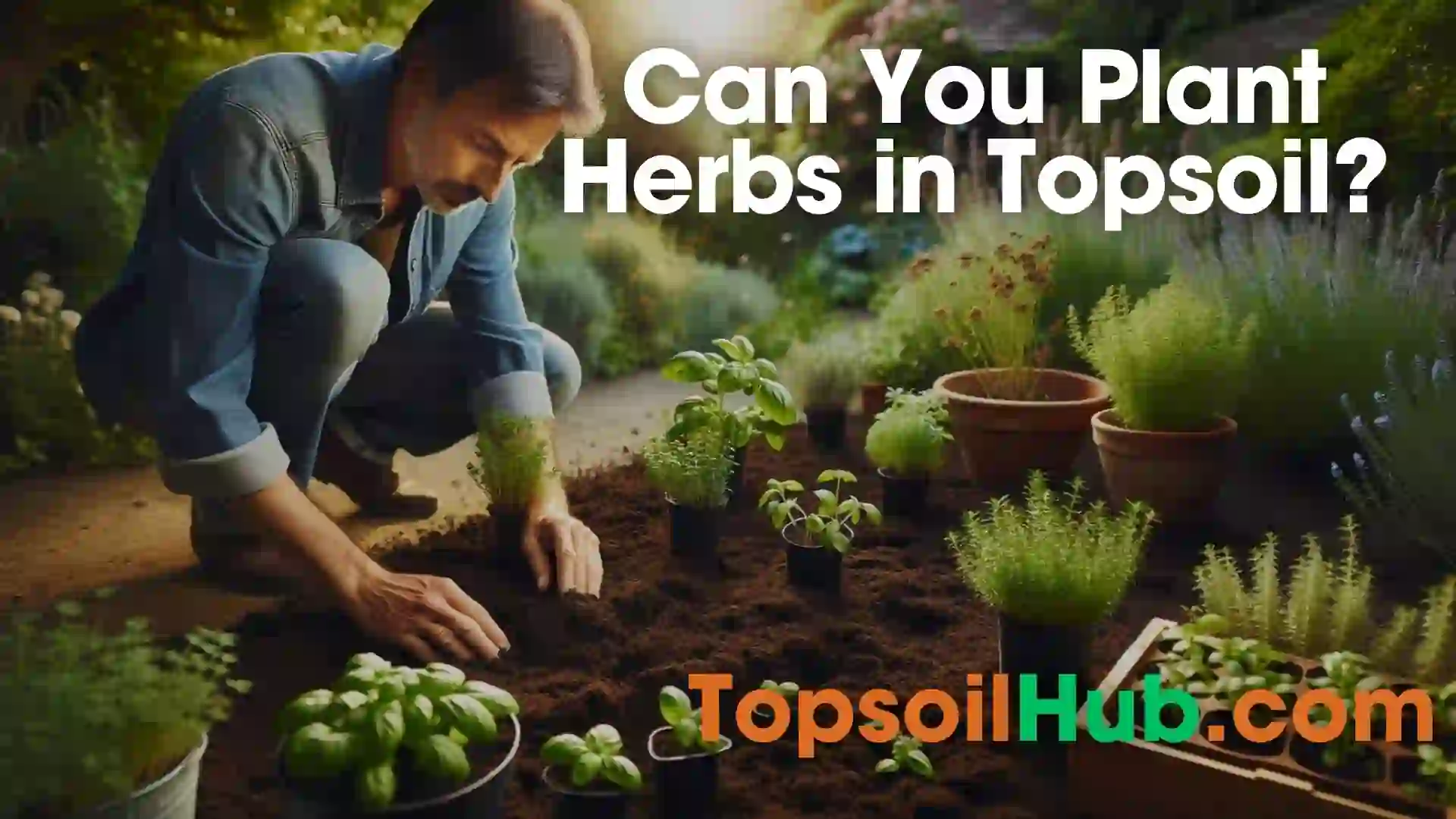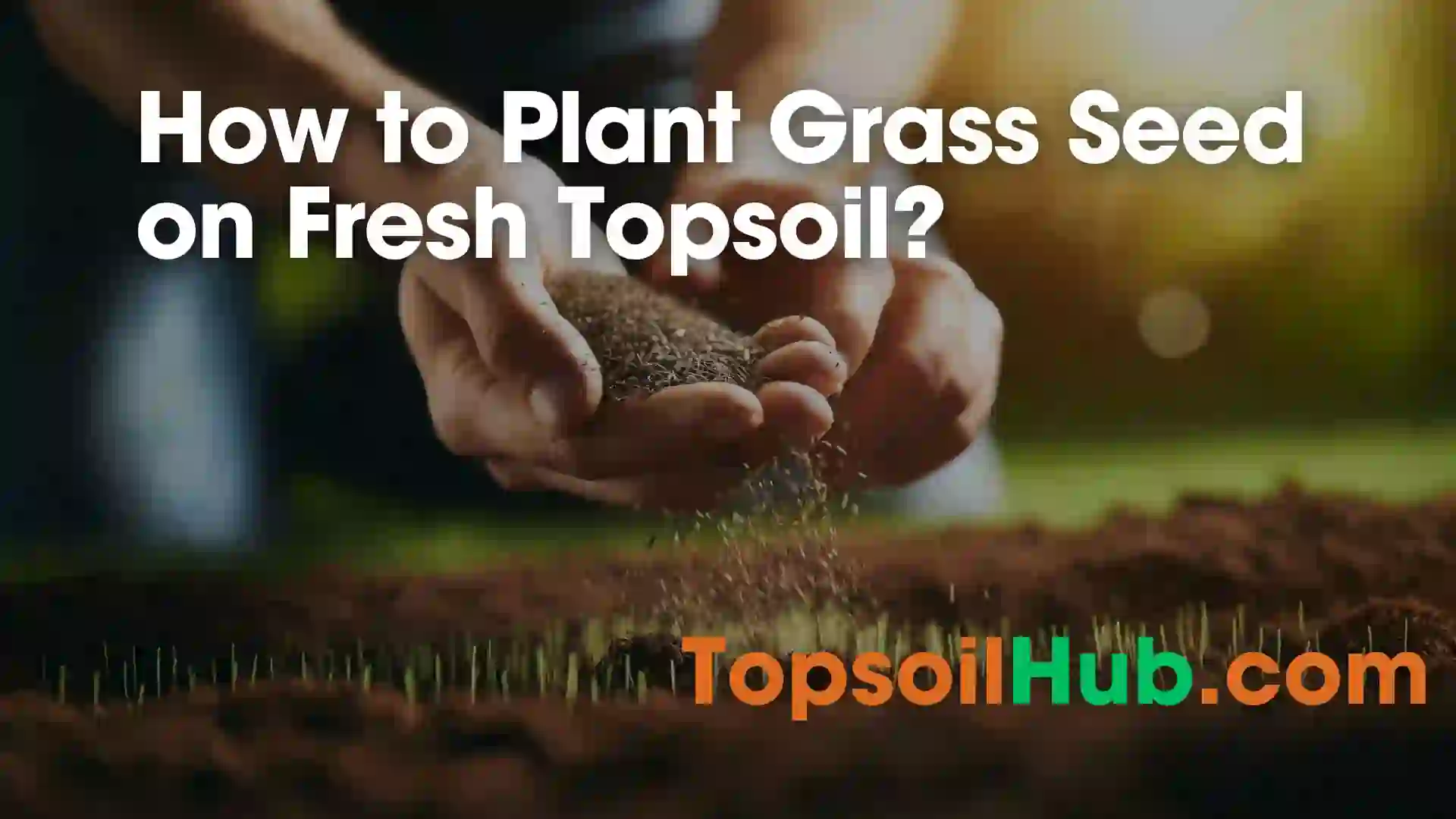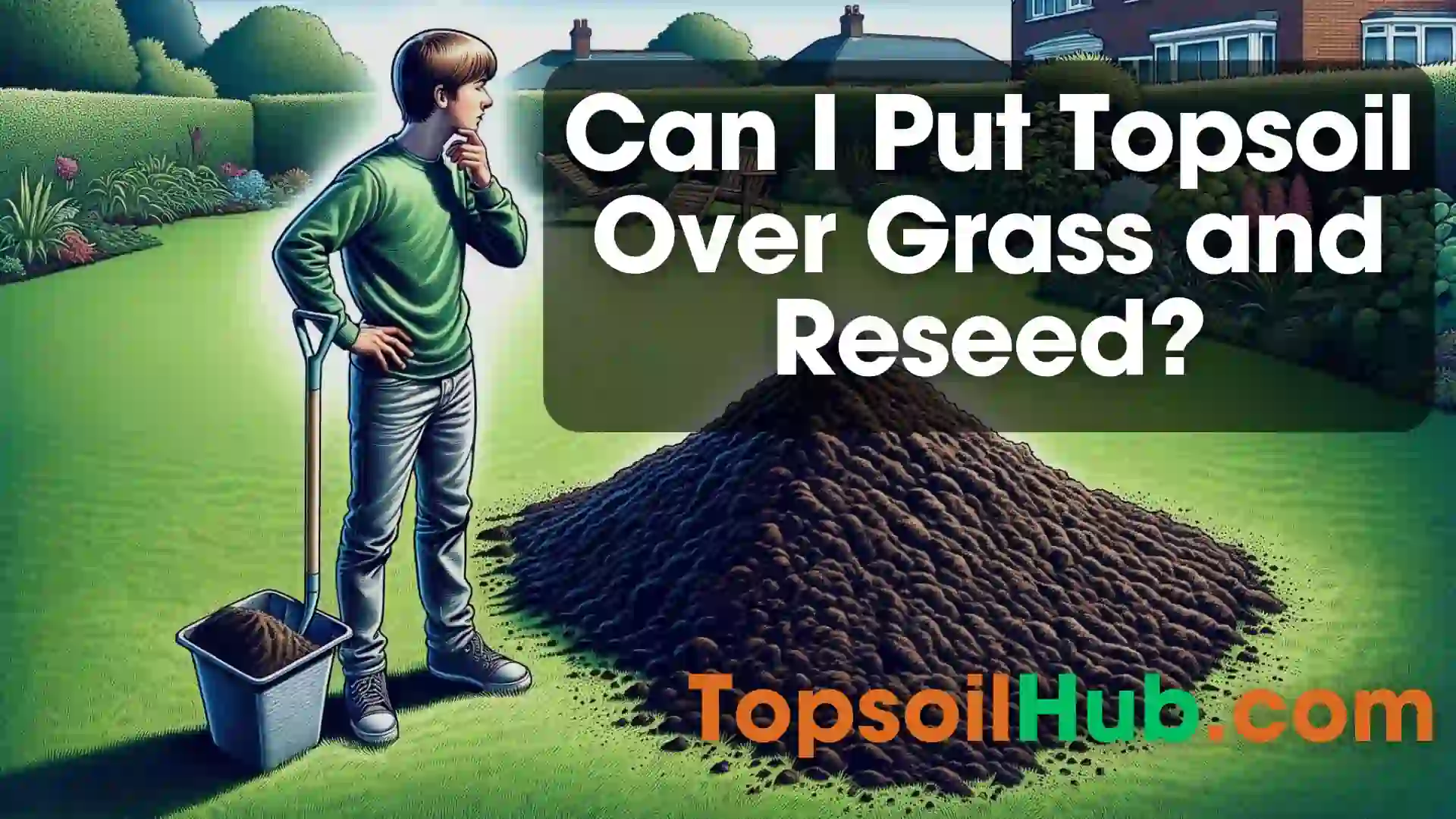Can You Plant Herbs in Topsoil? A Guide for Herb Gardeners
Herbs are wonderful plants that can add flavor, fragrance, and health benefits to your cooking and lifestyle. But can you plant herbs in topsoil? Herbs are not like other plants. They have specific needs and preferences when it comes to soil quality and texture.
In this blog post, you will learn whether herbs can be planted in topsoil, how to choose topsoil for herbs, the compatibility of topsoil with different herbs, the benefits and drawbacks of using topsoil for growing herbs, and some tips and alternatives to help you achieve a successful herb garden. Let’s begin.
Can You Plant Herbs in Topsoil? – Quick Answer
Yes, you can plant herbs in topsoil, but it depends on the type and quality of the topsoil and the herb species. Some herbs can grow well in topsoil, while others may struggle or die. You should test, amend, and improve your topsoil before planting your herbs.
You should also choose herbs that are compatible with your topsoil condition. Alternatively, you can use potting soil or potting mix for growing herbs, which can offer more benefits and fewer problems than using topsoil.
How to Choose Topsoil for Plantation of Herbs?
Choosing the right topsoil for planting herbs is important, as it can affect the growth, health, and flavor of your herbs. Here are some factors to consider when choosing topsoil for your herb garden:
1. The Source and Quality of the Topsoil
You should avoid using topsoil that comes from unknown or contaminated sources, such as construction sites, industrial areas, or roadside ditches. These topsoils may contain harmful substances, such as heavy metals, chemicals, or pathogens, that can damage your herbs or pose health risks to you and your family.
You should also avoid using topsoil that has been treated with herbicides or pesticides, as these can also harm your herbs or affect their taste. You should look for topsoil that comes from reputable and organic sources, such as garden centers, nurseries, or farms. You should also check the quality and freshness of the topsoil and avoid using old or stale topsoil that may have lost its nutrients or become infested with weeds or pests.
2. The Texture and Structure of the Topsoil
You should look for topsoil that has a loose and crumbly texture and a good balance of sand, silt, and clay particles. This will ensure that the topsoil has good drainage and aeration, which are essential for healthy root growth and water uptake. You should avoid using topsoil that is too sandy or too clayey, as these can cause problems with water retention or drainage. You should also avoid using topsoil that is too compacted or hard, as this can restrict root growth and air circulation.
3. The pH Level and Fertility of the Topsoil
You should look for topsoil that has a slightly acidic to neutral pH level (6.0 to 7.0), as this is the optimal range for most herbs. You can use a soil test kit or a pH meter to measure the pH level of your topsoil. If your topsoil is too acidic (below 6.0), you can add lime to raise the pH. If your topsoil is too alkaline (above 7.0), you can add sulfur or organic matter to lower the pH.
You should also look for topsoil that has a high organic matter content, as this will provide your herbs with nutrients and minerals. You can use a soil test kit or a soil analyzer to measure the nutrient levels of your topsoil. If your topsoil is low in nutrients, you can add compost, manure, or fertilizer to enrich it.
The Compatibility of the Topsoil with Different Herbs
Different herbs have different soil preferences and requirements, so you should choose topsoil that matches the needs of your herb plants. Here are some examples of herbs that can grow well in different types of topsoil:
1. Herbs that prefer sandy or rocky soils:
These herbs need well-drained and aerated soils that do not retain too much moisture or become waterlogged. They can tolerate low fertility and slightly alkaline soils. Some examples are rosemary, thyme, sage, lavender, oregano, and mint.
2. Herbs that prefer loamy or clayey soils:
These herbs need moderately moist and fertile soils that can hold enough water and nutrients for their growth. They can tolerate slightly acidic to neutral soils. Some examples are basil, parsley, cilantro, chives, dill, and fennel.
3. Herbs that prefer peaty or humus-rich soils:
These herbs need moist and acidic soils that are rich in organic matter and nutrients. They can tolerate low drainage and high humidity. Some examples are lemon balm, chamomile, tarragon, and marjoram.
Pros and Cons of Using Topsoil for Herbs
Using topsoil for growing herbs can have some advantages and disadvantages, depending on the type and quality of the topsoil and the herb species. Here are some of them:
Pros:
- Topsoil is readily available and inexpensive. You can buy it from garden centers or nurseries or use your own from your backyard or compost pile.
- Topsoil can provide a natural and fertile environment for your herbs. It can supply them with essential nutrients, minerals, and beneficial microbes that can enhance their growth and health.
- Topsoil can retain moisture well, which can prevent your herbs from drying out too quickly.
Cons:
- Topsoil can be too heavy and dense for some herbs. It can compact easily and reduce the drainage and aeration of the soil, which can lead to root rot, fungal diseases, and poor growth.
- Topsoil can be too acidic or alkaline for some herbs. The pH level of the soil can affect the availability of nutrients and the health of the plants. Most herbs prefer a slightly acidic to neutral soil (pH 6.0 to 7.0), but some topsoils can have a lower or higher pH that can harm your herbs.
- Topsoil can contain weeds, pests, pathogens, or contaminants that can compete with or damage your herbs. Some topsoils may have been exposed to herbicides, pesticides, or heavy metals that can be toxic to your plants.
Tips and Alternatives for Growing Herbs in Topsoil
If you decide to use topsoil for growing herbs, here are some tips to improve your chances of success:
- Choose herbs that are suitable for your topsoil type and condition. Some herbs are more tolerant of different soil textures and pH levels than others. For example, rosemary, thyme, sage, lavender, oregano, and mint can grow well in sandy or rocky soils with good drainage. Basil, parsley, cilantro, chives, dill, and fennel can grow well in loamy or clayey soils with moderate moisture.
- Test your topsoil before planting your herbs. You can use a soil test kit or a pH meter to check the pH level of your topsoil. You can also examine the texture, color, smell, and moisture content of your topsoil by hand. If your topsoil is too acidic (below pH 6.0), you can add lime to raise the pH. If your topsoil is too alkaline (above pH 7.0), you can add sulfur or organic matter to lower the pH.
- Amend your topsoil with organic matter or potting mix. You can improve the drainage, aeration, structure, and fertility of your topsoil by mixing it with compost, manure, peat moss, perlite, vermiculite, or coco coir. These materials can also help balance the pH level of your topsoil.
- Use raised beds or containers for growing herbs in topsoil. You can avoid some of the problems of using topsoil by planting your herbs in raised beds or containers that have better drainage and air circulation. You can also control the quality and quantity of the soil more easily.
Alternatively, you can use potting soil or potting mix for growing herbs instead of topsoil. Potting soil or potting mix is a specially formulated medium that is designed for container gardening. It does not contain any actual soil but consists of a range of natural ingredients to create a light and well-draining texture. Potting soil or potting mix has some advantages over using topsoil for growing herbs:
- Potting soil or potting mix is sterile and weed-free. You don’t have to worry about any unwanted plants or organisms that may harm your herbs.
- Potting soil or potting mix is pH-balanced and nutrient-rich. You don’t have to adjust the pH level or add any fertilizers to your potting soil or potting mix, as it already contains the optimal amount of nutrients and minerals for your herbs.
- Potting soil or potting mix is lightweight and porous. You don’t have to worry about your potting soil or potting mix becoming too compacted or waterlogged, as it allows excess water to drain away and air to circulate freely.
Conclusion
In conclusion, you can plant herbs in topsoil, but it depends on the type and quality of the topsoil and the specific needs of the herbs you want to grow. The best approach is to test and amend your topsoil to create the ideal conditions for the herbs you are planting. Choose herbs compatible with your topsoil’s texture, pH level, drainage, and nutrient content. Improve dense or compacted topsoil by mixing in organic matter.
Use raised beds or containers if needed to control the soil environment. For the easiest herb gardening, use a sterile, pH-balanced potting mix formulated for herbs. With some care in selecting and preparing the right topsoil or potting mix, you can have a thriving herb garden that adds wonderful flavor and fragrance to your home.
We hope this blog post has helped you learn more about the best soil for your herb garden. If you have any questions or comments, please feel free to leave them below. And if you enjoyed this blog post, please share it with your friends and family who are interested in herb gardening. Thank you for reading! 😊







